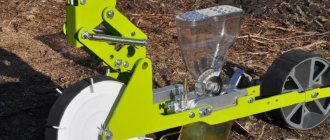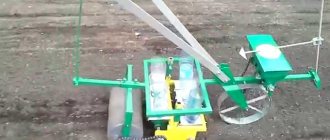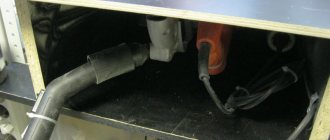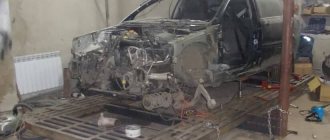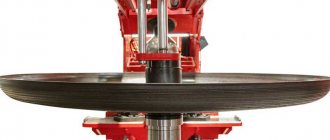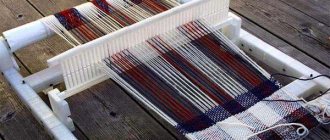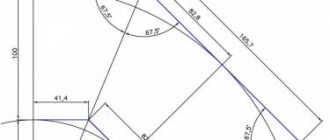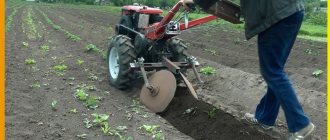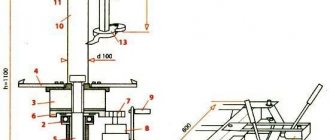Using different planting methods allows you to get a good harvest. The problem of sowing crops with small seeds is solved by using a manual seeder. Models on sale range from simple attachments to trailed devices for a walk-behind tractor or cultivator. When choosing, they are guided by the number of containers, additional accessories, adjustment parameters, and weight.
Advantages
A manual seeder for small seeds with your own hands allows you to save money and simplifies planting crops. Its characteristics are not very different from cheap purchased devices.
Positive aspects of self-production:
- from scrap materials,
- cheap.
Flaws:
- seeds of only one diameter (one crop),
- single row planting.
Note! Several seeders with different hole diameters practically automate seeding. A universal device is more difficult to make; manufacturing will require skill in working with metal and plastic.
Basic rules and criteria for choosing a finished model
If you can’t make a planter with your own hands for various reasons, you can purchase it at any construction market. However, when choosing a model, you should pay attention to such aspects.
- Productivity . The most effective devices are those with a trailed operating system, since they allow you to process a fairly large area of land. For sowing in small areas, it is more advisable to use manual units.
- Weight . Manual seeders are the lightest, which greatly simplifies the work process and does not overload the farmer. Towed devices carry the heaviest weight, and you need to get used to working with them.
- Functionality . Trailed devices have the richest functionality, which can be used not only for sowing seeds, but also for cultivating, loosening the soil, applying fertilizers, etc. Manual units are considered less functional.
- Adjustment options . Typically, the simplest manual models cannot compete with automated devices in terms of adjusting furrow depth and row width. Trailed planters are equipped with a function for adjusting these parameters, and also make it possible to change the size of the hole in the seed container, which significantly expands the range of seeds sown.
Today, manufacturers offer consumers a huge range of seeders that have excellent functionality, practicality and a long service life. Among the models that are popular with farmers are precision seeding devices “SOR-1/1”, “1001-V”, “SMK-1”, pneumatic models made in China and Poland, and trailing mechanisms made in China, Ukraine, and America.
Constructions
All models introduce seedlings into the ground; they differ in the method of sowing. Spreaders and planting equipment are provided.
Operating principle of spreaders
There are two types of spreaders:
- Manual: seeds pour out through the holes when you turn the handle of the device; there is a built-in distributor inside. The ability to adjust the diameter of the holes allows us to classify the devices as universal. Usually made of plastic. They are used for spreading fertilizers, but mainly as a manual lawn seeder.
- Mechanical: there is no motor, but there is a moving part. Seeds fall into the ground by periodically pressing a button on the handle while moving. One or more containers for seedlings are attached to the axis.
The main disadvantage of spreaders is the unevenness of sowing, so they are rarely used for vegetables, more often as a disperser for lawn grass.
Precision Fitting Devices
To uniformly sow vegetables, precision sowing devices are used, created on the principle of transmitting torque from the wheel to the shaft:
- Simple: the device moves, the shaft with recesses rotates, the seed from the cone-hopper falls on it, lingers in the recess, and then falls into the prepared groove with a given step. The seeding density depends on the distance between the recesses.
- Complex: the principle of operation is the same, but additional devices are added. Blades or spikes are attached to the front wheel to create grooves during movement, while the rear wheel is made level, which allows you to level the ground after landing. The supply of seeds to the shaft is regulated by a valve, and the seedlings move from the hopper along a special spout .
They are suitable for crops with small seeds, just like a seeder for regular lawn grass.
Note! The device allows you to work in a comfortable position, increases the sowing speed, and the seeds are distributed evenly.
Recycled materials, jars or plastic bottles will be useful when making a simple version of the product, and iron sheets, wheels, etc. will be needed for complex designs.
Devices for planting carrots
In country garden beds, carrots occupy a small area, so for planting it is enough to use improvised means.
Manual planters
An easy way to spread seeds evenly in the garden is to use common household items to help plant the seeds at some distance from each other. Manual carrot planter includes:
- medicine box with dispenser - sowing is done by squeezing,
- medical syringe - push version,
- old salt or pepper shaker - the holes are widened for planting.
It’s useful to know, read: — Choosing a manual seeder for small-seeded crops.
A do-it-yourself carrot planter can be made from different materials:
- from a plastic bottle: you can drill or punch a hole in the cap using a nail or screwdriver. For sowing, a tube is inserted and the seeds are mixed with sand. If you cook a paste from flour or jelly from starch, and then add seedlings to it, then the tube will not be needed;
- from a block: screw or nail bottle caps to the board at a distance of 1.5–2 cm. They squeeze out holes in the garden bed, fill them with seeds, water them and cover them with soil. If the lids are replaced with wooden pins 5 cm long, you will get a manual garlic planter;
- from a wooden rake: the teeth are fixed perpendicular to the ground, they are used to make holes in a loosened bed, and plant a vegetable.
Seeders for garden beds
A more convenient way of planting is to make simple devices. A do-it-yourself carrot seeder includes a roller and consists of a round body, an axis of rotation and a handle-handle. In the body, the central hole provides the ability to rotate around an axis, and the diameter of the holes is for planting crops. The handle sets the roller in motion, the body rotates, and the seeds fall out.
Note! When using a homemade roller, you do not need to bend towards the ground. The height of the handle is adjusted to the height of the person. Allows you to plant other crops with small seeds.
A manual carrot seeder, made with your own hands: metal tubes that are bent at an angle depending on the height of a person are suitable for the work; the container for grains is made in the form of a cone or funnel from a sheet of iron. A hopper (one or several) with the top down, wheels and handles are attached to a metal axle.
On a walk-behind tractor
The walk-behind tractor has recently replaced several tools previously used on the farm for the farmer. This is a kind of mini tractor for Russian gardeners.
Using the device, you can dig and process potatoes, plow the ground, and use it as a means of transporting goods over rough terrain if you build a homemade trailer.
Attaching a planter to a walk-behind tractor is not easy, but it will save a lot of time and effort.
To build a garlic planter on a walk-behind tractor with your own hands you will need:
- The container for seeds is triangular in shape, so that it is convenient to pour through a wide channel, and the seeds come out from the opposite narrow end in a dosed manner.
- Wheel.
- Gears.
- Chain.
- Bolts and fastenings.
- Opener.
These elements need to be attached to the walk-behind tractor, according to a pre-prepared drawing.
Let's make a seeder from a plastic bottle
This seeder is inexpensive and simple.
Prepare a used plastic bottle and tool. A suitable bottle will be the one that suits you in volume: 0.5 liters, 1 or 2 liters.
Holes in the bottom of a plastic bottle can be drilled or pierced with a hot nail. To avoid getting burned, hold the nail with pliers over a fire or heating device. Holes must be made all over the bottom: first, a little and check by pouring the seeds, shake over the pan, if this is not enough, do more.
See the diagram for hole diameter:
Manufacturing
- Drill a hole right through the middle of the plastic jar, and make another one on the side to fill in rectangular or triangular seeds.
- Make a lid from a tin that will cover the second hole. Make sure that it fits tightly to the jar and that the seeds do not spill out through it. It is best to secure it at the bottom and leave the top part movable. To add the seeds, you only need to slide this lid.
- Insert the metal tube into the plastic one and place it in the center of the jar, making a kind of shaft on which the jar with seeds will rotate.
- Secure these tubes with a bolt, placing washers on both sides so that the container rotates freely.
- Using a hot nail, we make holes of the required diameter at the required distance along the side of the can. It is clear that these sizes will depend on what crops you will sow with its help.
- The seeder is ready, all that remains is to screw it to the wooden handle. For greater efficiency and automation, it can be placed on the front of the chopper. In this case, after sowing, you will immediately cover the seeds with soil using a hoe.
Do-it-yourself precision fit device
The model is made according to a drawing prepared in advance. A simple version is made from a plastic or metal round jar with holes in diameter, their size is for the seeds of the planted crop, a pusher handle and an axis of rotation.
Another option is an axle with attached two wheels, a shaft, a grain hopper and a pusher handle. Notches are drilled into the shaft, but not holes. The seeds fall out of the hopper and are evenly distributed throughout the row thanks to these depressions. It is better to make the bunker out of plastic so that you can see the number of seeds, but a box made of wood or metal will also work.
You can attach a coulter to form furrows; to level them and cover them with soil, use a piece of foam rubber or a hoe. If several bins are installed on the axis, the planting width will increase.
Important! Before sowing, adjust the planting depth, row spacing, and seedling consumption rate.
A homemade seeder allows you to plant different crops with small seeds, beets, phacelia, etc.
The small seed model is suitable for small areas or greenhouses. It speeds up and simplifies the planting process and is safe to use. Depending on the budget, the device is purchased or made independently. Spreaders are suitable for planting lawns and alfalfa; precision sowing or universal models are suitable for vegetables.
